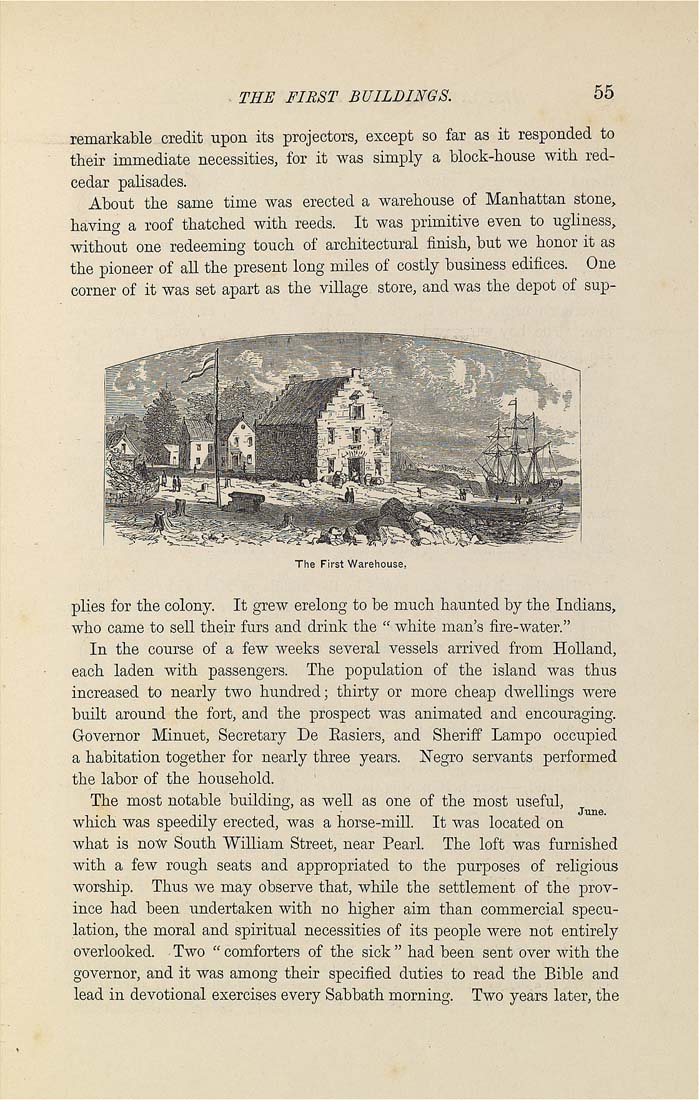THE FIRST BUILDINGS. 00
remarkable credit upon its projectors, except so far as it responded to
their immediate necessities, for it was simply a block-house with red-
About the same time was erected a warehouse of Manhattan stone,
having a roof thatched with reeds. It was primitive even to ugliness,
without one redeeming touch of architectural finish, but we honor it as
the pioneer of aU the present long miles of costly business edifices. One
corner of it was set apart as the vUlage store, and was the depot of sup¬
plies for the colony. It grew erelong to be much haunted by the Indians,
who came to sell their furs and drink the " white man's fire-water."
In the course of a few weeks several vessels arrived from Holland,
each laden with passengers. The population of the island was thus
increased to nearly two hundred; thirty or more cheap dwellings were
built around the fort, and the prospect was animated and encouraging.
Governor Minuet, Secretary De Easiers, and Sheriff Lampo occupied
a habitation together for nearly three years. Negro servants performed
the labor of the household.
The most notable building, as well as one of the most useful,
which was speedily erected, was a horse-mUl. It was located on
what is now South WiUiam Street, near Pearl. The loft was furnished
with a few rough seats and appropriated to the purposes of religious
worship. Thus we may observe that, whUe the settlement of the prov¬
ince had been undertaken with no higher aim than commercial specu¬
lation, the moral and spiritual necessities of its people were not entirely
overlooked. . Two " comforters of the sick " had been sent over with the
governor, and it was among their specified duties to read the Bible and
lead in devotional exercises every Sabbath morning. Two years later, the
|








